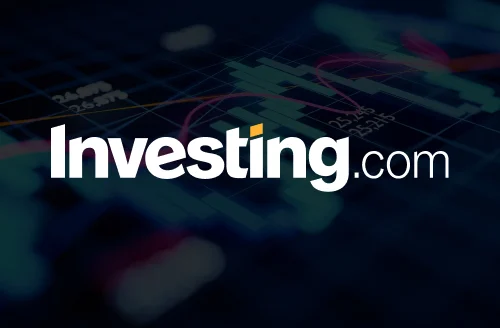The Modern Bull: Rational or Not, It Still Has Logic on Its Side

The Relentless Logic of the Bull
Every great market run starts with disbelief and ends with exhaustion. We’re somewhere in between. The ’s ascent, now a near-$17 trillion monolith since April, feels less like a rally and more like a migration — liquidity flowing uphill, gravity-defying, searching for yield in a desert of alternatives. This is not a market that needs a reason to rise; it just needs the absence of a reason to stop.
Amazon (NASDAQ:) and Apple (NASDAQ:) once again lit the fuse, and even though Apple’s China stumble tempered some of the fireworks, the broader message from Corporate America remains clear: margins are holding, balance sheets are clean, and the AI revolution keeps feeding the animal spirits.
The has now strung together its longest monthly winning streak in eight years — that’s not luck, that’s structural flow. The AI bid is no longer a theme; it’s a liquidity regime.
Bonds, meanwhile, took a breather after Powell’s cautious tone hinted the Fed isn’t in a hurry to , but the equity tape didn’t care. The rallied, oil faded, and traders simply rotated the narrative back to earnings momentum — the market’s favorite fairytale. Even with narrowing breadth, it’s hard to fight the sheer gravitational pull of liquidity when over 60% of S&P 500 firms have beaten estimates. This isn’t the euphoric phase yet, but it’s getting close — that dangerous zone where skepticism becomes the contrarian position.
You can hear it in the tape: the bears’ “glass half empty” arguments have gone flat. Every attempt to fade the rally gets steamrolled by AI inflows, ETF rebalancing, and quarter-end allocation flows. Global equities just pulled in another $17 billion in a week. The bid is relentless, and it’s not just coming from tech.
Capex cycles that were supposed to fade are accelerating, with AI spending now spilling into old-world sectors — manufacturing, logistics, even utilities. The market has turned data into energy, and every corporate transcript is now littered with the same two letters: AI.
The irony is that while the rally looks narrow, the economic narrative underneath is broadening. This isn’t 2000 — profitability is real, margins are robust, and return on equity has kept pace with valuations. Growth is expensive, yes, but not irrational. The difference this time is that the fundamentals have caught up with the dream. The market is paying for future compute, not vaporware.
Valuations north of 23x forward earnings don’t scare this market; they define it. When the risk-free rate starts to smell like it’s peaked and corporate America’s profit engine is still humming, the equity risk premium becomes elastic — stretched, but not broken. Traders know this pattern: as long as the Fed doesn’t pull the rug, dips are just reloading zones. Seasonally, November kicks off the best two months of the year. The setup writes itself — FOMO meets positioning discipline in a market that refuses to correct.
Of course, even the best bull runs carry their own shadow. The question isn’t whether this rally can last, but whether it can broaden. Until small and mid-caps find an earnings pulse, this remains a large-cap dominance cycle — the Mag7 still steering the entire convoy. That’s not sustainable forever, but right now, it doesn’t have to be. As long as AI capex remains the new fiscal policy, the concentration risk just becomes another feature of the new liquidity order.
There’s an old trader’s adage: “You can’t short strength.” That’s precisely where we are. The tape is too thick, the flows too sticky, and the narrative too seductive. Even a lengthy list of market stalwarts’ ghostly warnings barely registers. This market is a runaway freight train powered by algorithms, dividends, and machine learning dreams.
It may not be rational, but it’s perfectly logical — in the way only modern markets can be. The bull doesn’t need everyone’s belief; it just needs everyone’s money.
When Volatility Becomes the System
There was a time when a two-sigma move could define a week. Now, it barely defines a morning. What once required an exogenous shock — a surprise payroll print, a rogue central banker, a flash crash — now erupts before lunch, then reverses before dinner. The modern market no longer breathes in cycles of calm and storm; it inhales turbulence as oxygen. Volatility hasn’t spiked — it’s evolved. It has become structural.
Across the screens, megacaps swing $200–300 billion a day, similar to the entire volume of biotech names in 2005. Amazon, Nvidia (NASDAQ:), and Apple now carry the emotional load of the entire risk complex. The scale is biblical: one strong whisper from a CEO can add the GDP of Greece to a market cap before New York’s open, only to erase it by the Asian close. We’ve crossed a Rubicon where capital behaves less like savings and more like signal — a digital organism chasing its own reflection.
As I replied to one of my Substack readers in the comment section:
The old playbooks are about as helpful now as a pager on a trading floor. These days, it’s all seatbelts, caffeine, and gut feel. Every week, the market adds a new chapter, crosses out the last one, and changes the plot halfway through. My advice to the new crop? Don’t bother memorizing the rules — they’ll be rewritten before lunch. Just stay curious, stay nimble, and keep your crash helmet close.
In the old world, volatility was cyclical. It rose when growth faltered or policy tightened and ebbed when central banks soothed. That world is gone. Today’s volatility is endogenous — bred inside the system’s own circuitry. Liquidity, which once cushioned, now amplifies. Market-making has thinned to an optical illusion, and what looks like depth can vanish when price moves too quickly.
The algorithms that were built to smooth liquidity have become accelerants. Their logic — react, rebalance, repeat — converts every flicker of sentiment into price action, every price action into positioning, and every position into narrative.
The result is a self-reinforcing loop: sentiment drives positioning, positioning drives flow, and flow drives narrative. And narrative drives sentiment all over again. The market has become its own feedback engine — a living mirror of the AI systems it obsesses over.
You can’t talk about structure without talking about the mirror. In the same way, AI systems learn by recursive feedback, markets now learn through their own price moves. Headlines feed models, models move orders, orders move markets, and markets feed the next headline. Each circuit completes in milliseconds. Liquidity is now light — it travels through fiber and decays at the speed of code.
The irony is delicious: markets are behaving like neural nets, even as they price the companies building them. We used to trade on fundamentals; now we trade on inference. The tape has become a predictive model, retraining itself every hour. Nvidia’s valuation doesn’t just reflect AI — it is AI, the market’s own computational mirror rendered in cash flows and gamma.
Traditional risk frameworks are built on the myth of the bell curve — on the idea that big moves are rare and tail events, by definition, live in the tails. But the tails have eaten the distribution. What used to be “fat-tail risk” is now just Tuesday. Volatility clusters, correlations invert, and risk parity becomes risk concentration.
A $100 billion day in a single stock was once a freak occurrence; now it happens every week. Index volatility might look benign, but that’s an illusion of composition. The megacaps carry both the ballast and the beta, and when they move, everything else drifts in their wake. Beneath the surface, realized volatility in single-names is screaming, while index VIX remains sedated — a calm ocean masking tectonic stress below.
For traders, this is both a nightmare and a playground. Fundamentals still matter, but they express through flow. The Fed, the bond market, the AI-capex boom — they all translate into liquidity pulses that ripple through ETFs, options books, and passive flows.
Every time a market-maker delta-hedges a retail call, a billion-dollar shadow order fires across the network. Every gamma squeeze is a sermon on reflexivity. You don’t fight that by predicting data; you anticipate flow. You read the network — where the positioning sits, how the vol surface bends, where liquidity thins out. This is the new macro: less econometrics, more topology. Less mean reversion, more feedback awareness.
If volatility is structural, then so is fragility. A system that feeds on its own motion cannot rest. It oscillates, like an overloaded circuit searching for equilibrium. For now, the megacaps keep the illusion intact — their liquidity, their earnings power, their sheer gravitational pull.
But their dominance is the system’s vulnerability: when the nodes grow too large, the network becomes brittle. And that’s the paradox of 2025’s market: the higher the concentration, the thinner the buffer. One slip in sentiment can unwind a trillion in capitalization before you’ve finished your coffee.
Volatility used to be an outcome. Now it’s an input. We trade inside a market that behaves like the very intelligence we’re trying to build — recursive, reflexive, self-aware enough to sense its own feedback. It doesn’t fear chaos; it requires it. And for those of us who’ve lived long enough to remember when a two-sigma day meant something, that’s both terrifying and exhilarating. The market has become the machine. The only question left is whether we’re still driving it — or it’s now driving us.
The Power Race: America’s New Energy Arsenal and the AI Century
There’s a new kind of arms race underway — not for land, not for oil, but for electrons.
President Trump’s energy doctrine isn’t just about drilling rigs and pipelines anymore; it’s about wiring the future. The pursuit of “U.S. energy dominance” has fused with the race to dominate artificial intelligence — two seemingly separate games now welded into one. The battlefield? The grid. The prize? The world’s next great source of power — computational power.
Nine months into the new term, the administration has moved like a trader spotting an arbitrage window. Executive orders, fast-tracked LNG approvals, environmental rollbacks — all designed to get electrons flowing faster. The mantra is simple: power must be cheap, reliable, and domestic. The U.S. can’t win the AI race if it can’t keep the lights on in the data center.
The irony, of course, is that this isn’t your grandfather’s energy playbook. The world that once revolved around barrels now revolves around megawatts — and they’re every bit as strategic. Data centers have become the new refineries of the digital age: they don’t smell like hydrocarbons, but they burn just as hot in the balance of payments. AI workloads are expected to soak up more than 10% of America’s power supply by 2030. That’s not a tech story. That’s a macro story.
So Washington’s new energy map reads like a trader’s portfolio: diversify or die. Fossil fuels still hold the front line — coal revived, gas extended, leases unlocked — but this time they’re not alone. Nuclear, geothermal, and selective renewables are being folded back in, not as climate gestures, but as tools of national competitiveness. The AI age doesn’t care whether power is green or grey; it just wants it on.
But the market knows the cost curve isn’t friendly. Combined-cycle gas turbines — the workhorses of America’s baseload generation — have seen capex double since 2023. The queue for equipment now stretches out years, not quarters. It’s the same story everywhere: bottlenecks in turbines, transformers, grid interconnects. You can’t code your way around steel and copper.
That’s why the White House has dusted off the “drill baby, drill” spirit — not just for oil, but for geothermal wells. It’s a neat policy two-step: give fossil fuels a sprint, give geothermal and nuclear a runway. Geothermal developers, many ex-frackers, are using old oilfield tricks to harvest new heat. Meanwhile, nuclear is being repackaged for the AI era — from 1960s reactors to modular fission boxes designed to hum quietly beside a data campus.
And yet, every energy source has its Achilles heel. Gas is running into turbine shortages, coal can’t hide its economics, solar and wind face the “tax credit cliff,” and nuclear still depends on imported uranium — even after tariffs were lifted. The dream of energy dominance is, like any macro trade, a leveraged position. It works until it doesn’t.
That’s why the U.S. energy strategy feels less like a transition and more like a hedge book — a sprawling long-short portfolio across fossil, nuclear, geothermal, and renewables. Each leg offsets the other. Gas hedges renewables’ intermittency. Nuclear hedges geopolitics. Geothermal hedges time. Together they build what traders call convexity — resilience with upside.
For markets, the signal is clear: energy isn’t the back-office input of the digital economy anymore; it’s the front-of-house trade. The dollar, inflation, and equity leadership all orbit around it. If America gets this mix right — the right blend of speed, cost, and independence — it secures not just energy dominance, but computational sovereignty. If it doesn’t, every AI breakthrough risks becoming an imported commodity.
This is the new industrial policy of the 21st century — the fusion of silicon and shale, code and kilowatts. The U.S. wants to be the OPEC of intelligence. But to do that, it must first win the quiet war of electrons — fought not on a battlefield, but through transformers, cooling fans, and turbine blades.
For traders, the takeaway is simple: this isn’t an ESG sideshow or a political headline. It’s the next liquidity regime. The energy trade is back — not as an old-world fossil play, but as the operating system of the AI age.
And if the market’s any guide, America’s energy machine is about to discover what every trader learns the hard way: when you promise dominance, you also inherit volatility.
When the Market Becomes the Machine
Most of my market conversations last week have drifted away from traditional macro and deep into AI — and that shift isn’t random. It’s structural. The old macro levers — rates, inflation prints, even the Fed’s tone — are still in the background hum, but they’ve stopped being the music. What’s commanding the melody now is the AI liquidity loop — a self-reinforcing system where capital, narrative, and technological scale all feed each other in real time.
Think about it: every data point in this market is being reinterpreted through an AI lens. Capex is no longer just spending — it’s compute accumulation. EPS beats aren’t just profitability — they’re proof of digital horsepower. Even geopolitics, once the dominant macro driver, now plays second fiddle to who’s cornering the supply chain for GPUs, rare earths, or data centers.
That’s why AI isn’t just a “theme” anymore; it’s the new liquidity regime. The megacaps have effectively become policy tools — absorbing flows, setting market tone, and dictating risk appetite in a way the Fed used to. Their balance sheets are the new carry trade.
This matters because it changes how traders need to think. The old macro playbook — buy dips on easing, sell rips on tightening — doesn’t map cleanly anymore. Instead, we’re trading a feedback system that behaves more like a neural net: price action is both signal and input. The volatility isn’t coming from shocks; it is the structure.
So yes, my focus has shifted — because macro is no longer the cause, it’s the echo. The real driver now is the architecture of the AI economy itself: who owns the compute, who finances the infrastructure, and how that power translates into market concentration. It’s not about the Fed reacting to growth — it’s about the market pricing intelligence as growth.
We’ve transitioned from a world where policy created liquidity to one where technology does. That’s why I keep circling back to AI. It’s not just the next chapter of macro — it’s the rewrite.
Chart of the Week
The macro data, thin as it was thanks to Washington’s gridlock, leaned soft through most of the month. Still, the final stretch brought a flicker of life — a modest improvement in sentiment and spending that hinted at resilience beneath the slowdown. Uptober, in that sense, wasn’t a rally of faith but one of familiarity — a world learning to trade in half-light, where hope and hesitation coexist on the same chart.
Running Update
Still nursing a non-running right-flank and back injury. Managed to put in a few short runs, but the niggle starts to flare around the 6 km mark — enough to dampen any distance rhythm and effectively rule me out of the late-November and December local races. Oh well, time to reset and aim for an old faithful target: the May Hua Hin Marathon. Plenty of runway to heal, rebuild, and get the legs turning over properly again.





